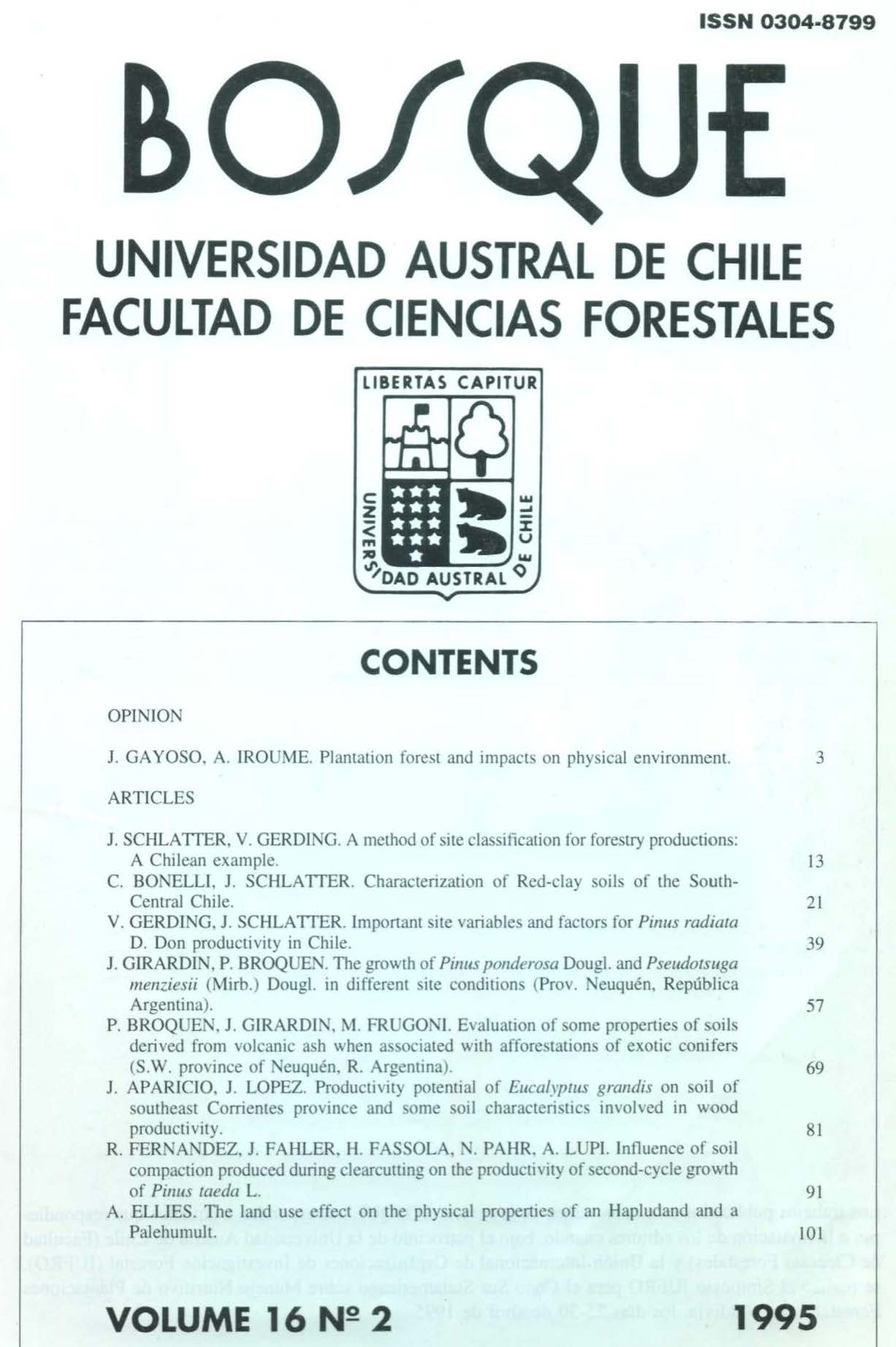The land use effect on the physical properties of an Hapludand and a Palehumult
Main Article Content
Abstract
The influence of land use on the physical and mechanical properties of an Hapludand soil under cropping and a Palehumult soil under native forest in southern Chile was analyzed. The sites under forest were used as a reference base to evaluate changes. Pore size distribution, bearing capacity, and structural cohesion were determined on undissturbed samples from the different soil layers. At the field sites, penetration and torsion resistance were determined. Under intensive land use, several changes on the soil physical properties were evident. An increase in the settlement under intensive land use in both soils was noted. A loss of pore space was observed for large pores, thereby increasing the number of middle and fine pores. The Hapludand soil showed seasonal changes on pore size distribution greater than the Palehumult. The decrease in the slopes of the consolidation curves in the intensively used sites was associated with an increase in the bearing capacity, structural cohesion, torsion resistance, and soil penetration resistance. The reduced stability in water of soil aggregates from the intensively used sites was correlated with both quantitative an qualitative modifications in the soil organic matter. These soils also wetted and crumbled easily.

